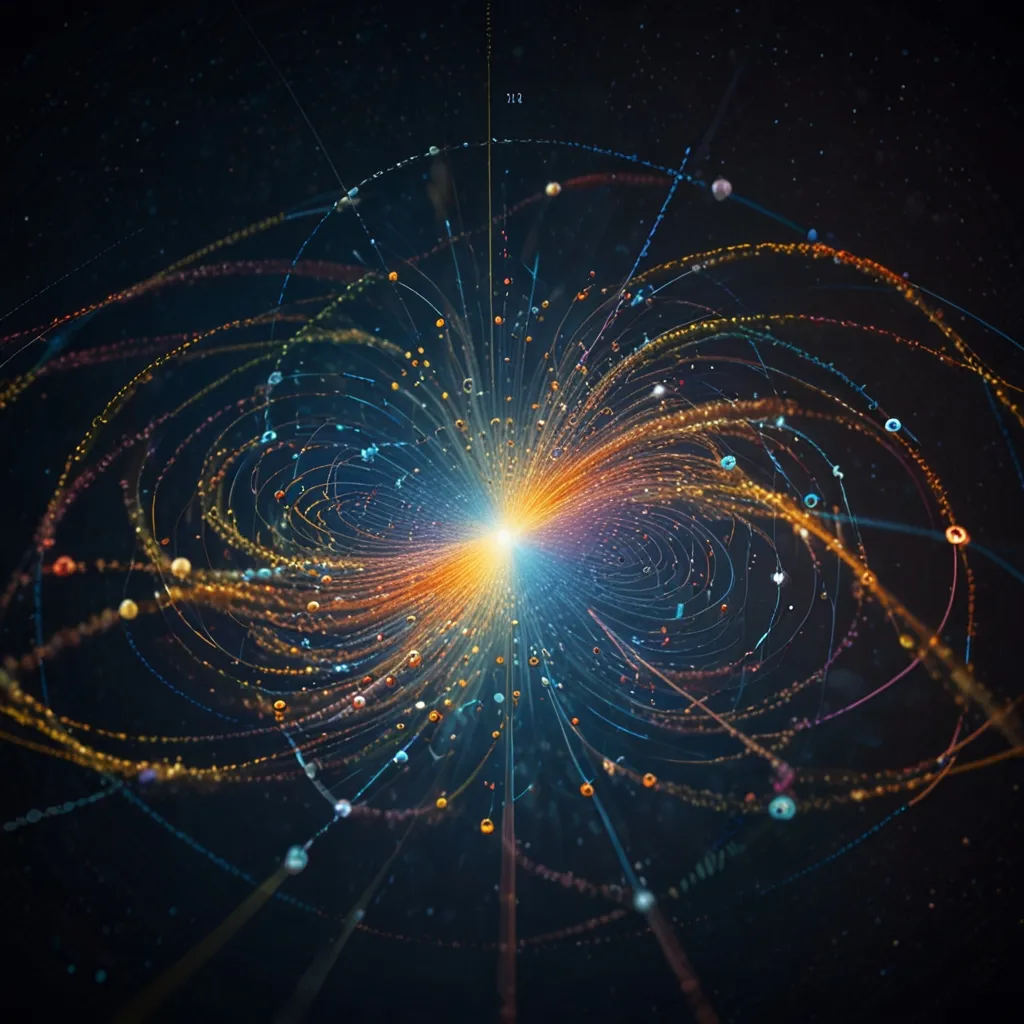Rewiring Your Brain: Unlocking the Power of Neuroplasticity
Ever wonder if you could upgrade your brain like you upgrade your smartphone? Well, turns out you can, thanks to a nifty little thing called neuroplasticity. It’s not some sci-fi concept - it’s real, and it’s pretty darn amazing.
Neuroplasticity is your brain’s superpower. It’s the ability of your brain to change, adapt, and rewire itself throughout your entire life. Think of it as your brain’s way of staying young and hip, always ready to learn new tricks.
So, what’s the big deal about neuroplasticity? Well, it’s like having a magic wand for your brain. You can use it to boost your brainpower, improve your mood, and even help your brain heal after an injury. It’s like giving your brain a gym membership, but without the sweaty towels and grunting bodybuilders.
Let’s dive into how this brain magic works, shall we?
Your Brain: The Ultimate Shapeshifter
Your brain isn’t some rigid lump of gray matter. It’s more like a super-advanced Play-Doh that can mold and reshape itself based on your experiences. Every time you learn something new or have a novel experience, your brain is busy creating new connections between neurons. It’s like your brain is constantly building new highways and bridges to get information from one place to another more efficiently.
This ability to change is what allows us to learn new skills, form memories, and recover from brain injuries. It’s why a stroke patient can sometimes regain lost abilities through therapy, or why you can still learn to play the ukulele even if you’re well past your college years.
Boosting Your Brain Power: The Neuroplasticity Way
Now, here’s where things get really exciting. You can actually harness the power of neuroplasticity to give your brain a serious upgrade. It’s like being able to download more RAM for your brain, except it’s way cooler and doesn’t require any sketchy downloads.
One of the best ways to flex your neuroplasticity muscles is by learning a new language. Yeah, I know, it sounds like a lot of work, but hear me out. When you learn a new language, your brain goes into overdrive. It’s not just memorizing new words; it’s creating new neural pathways, beefing up areas related to language, attention, memory, and even motor skills. It’s like sending your brain to a cross-fit class.
And get this - being bilingual can actually help keep your brain sharp as you age. It’s like a cognitive fountain of youth. So next time someone gives you a hard time for binge-watching Korean dramas, just tell them you’re engaging in advanced neuroplasticity exercises.
Video Games: Not Just for Couch Potatoes
Here’s a fun twist - playing video games can actually be good for your brain. I know, right? It’s the excuse we’ve all been waiting for. But seriously, gaming can improve things like attention, memory, and problem-solving skills. Even a few hours a week can make a difference.
So next time you’re battling aliens or solving puzzles in a game, remember - you’re not wasting time, you’re enhancing your neuroplasticity. It’s practically a public service.
Music: The Brain’s Favorite Workout
If video games aren’t your thing, maybe music is more your jam. Learning to play an instrument is like sending your brain to a neuroplasticity boot camp. It’s a complex, multisensory activity that gives your brain a serious workout.
And the best part? The benefits last long after you’ve put down your instrument. People who learned music as kids often have better cognitive performance as adults. It’s like your brain is still humming that tune years later.
Even if you’re not musically inclined, just listening to music can have benefits. Music therapy has been shown to slow down cognitive decline in older adults, improve movement and coordination, and even help with emotional distress. So crank up that playlist - doctor’s orders!
Get Moving: Exercise for Your Body and Brain
You knew this was coming, didn’t you? Yep, exercise is good for your brain too. But before you groan and reach for the chips instead, hear me out.
Exercise, especially the heart-pumping aerobic kind, is like miracle-grow for your brain. It increases blood flow, promotes cell growth, and can even help create new neural pathways. It’s not just good for your body; it’s giving your brain a spa day.
And here’s a cool bonus - exercising with others adds a social dimension, which is like giving your brain a double shot of goodness. It’s great for emotional wellness and can help fight off the blues. So grab a buddy and go for a jog, or join that Zumba class you’ve been eyeing. Your brain will thank you.
Feed Your Brain: The Neuroplasticity Diet
Your brain might be small, but it’s a hungry little organ. It gobbles up a big chunk of your daily energy intake. So, if you want to keep it happy and plastic (in the neuroplasticity sense, not the Barbie doll sense), you need to feed it right.
Foods like walnuts, blueberries, and avocados are like superfood for your brain. They’re packed with nutrients that help promote neuroplasticity. And don’t forget about vitamin D and magnesium - they’re like the cool kids that everyone wants at their brain party.
But it’s not just about what you eat. Sleep is crucial too. A good night’s sleep is like hitting the reset button for your brain. It encourages the growth of those all-important connections between neurons. Even a short nap can give your neuroplasticity potential a boost. So next time you’re caught snoozing at your desk, just say you’re engaging in advanced neuroplasticity exercises. (Disclaimer: Results may vary. Use at your own risk.)
Friends: The Ultimate Brain Boosters
Here’s some good news for all you social butterflies out there - hanging out with friends is great for your brain. Strong social connections can improve your quality of life and emotional wellness. They can even help relieve symptoms of anxiety and depression.
It’s not just about having a good time (although that’s important too). Social interactions challenge your brain in unique ways. They require you to read social cues, engage in conversation, and navigate complex social situations. It’s like sending your brain to a really fun gym class.
And if you’re dealing with mental health struggles, therapies like cognitive behavioral therapy (CBT) can actually change the structure and function of your brain. It’s like giving your brain a makeover from the inside out.
Bouncing Back: Neuroplasticity and Recovery
Neuroplasticity isn’t just about making a healthy brain better. It’s also a powerful tool for recovery from brain injuries. After a traumatic brain injury, neuroplasticity is what allows the brain to rewire itself and regain lost functions.
Brain exercises and cognitive games can help create new neural pathways and improve cognitive function. There are even techniques like constraint-induced movement therapy (CIMT) that force the use of affected limbs, helping the brain adapt and rewire itself.
It’s not always easy, and progress can be slow. But the brain’s ability to change and adapt offers hope and possibilities that we never thought possible before.
Daily Neuroplasticity: Small Changes, Big Results
Now, I know what you’re thinking. “This all sounds great, but I barely have time to brush my teeth twice a day. How am I supposed to fit in all these brain-boosting activities?”
Well, the good news is that you don’t need to make drastic changes to benefit from neuroplasticity. Small, consistent efforts can make a big difference. Here are a few simple ideas:
Learn to juggle. No, really. It’s fun, it’s challenging, and it’s great for your brain. Plus, it’s a cool party trick.
Take breaks and let your mind wander. Doodling or just staring out the window can activate your brain’s default mode network, giving it a chance to rest and recharge.
Try new things. Travel to new places, learn a new skill, or take up a new hobby. Novelty is like candy for your brain.
The Future is Plastic (Neuroplastic, That Is)
Understanding neuroplasticity has completely changed how we think about brain health. It’s not about being stuck with the brain you’re born with. It’s about realizing that your brain is capable of amazing changes throughout your entire life.
By challenging and engaging our brains in new ways, we can improve our cognitive performance, boost our mood, and even help our brains recover from injuries. It’s like having a superpower that you can tap into anytime.
So, whether you’re learning a new language, playing video games, jamming on a guitar, or just hanging out with friends, remember - you’re not just having fun. You’re rewiring your brain for better health and performance. It’s science, and it’s pretty darn cool.
In the end, neuroplasticity isn’t just some fancy scientific term. It’s a practical guide to living a healthier, more resilient life. It’s about embracing change, seeking out new experiences, and never stopping learning. Because every day is an opportunity to grow, adapt, and improve.
So go ahead, give your brain a workout. Challenge it, feed it, rest it, and watch it flourish. After all, you’ve got the most advanced piece of technology right there in your head. Might as well make the most of it, right?






